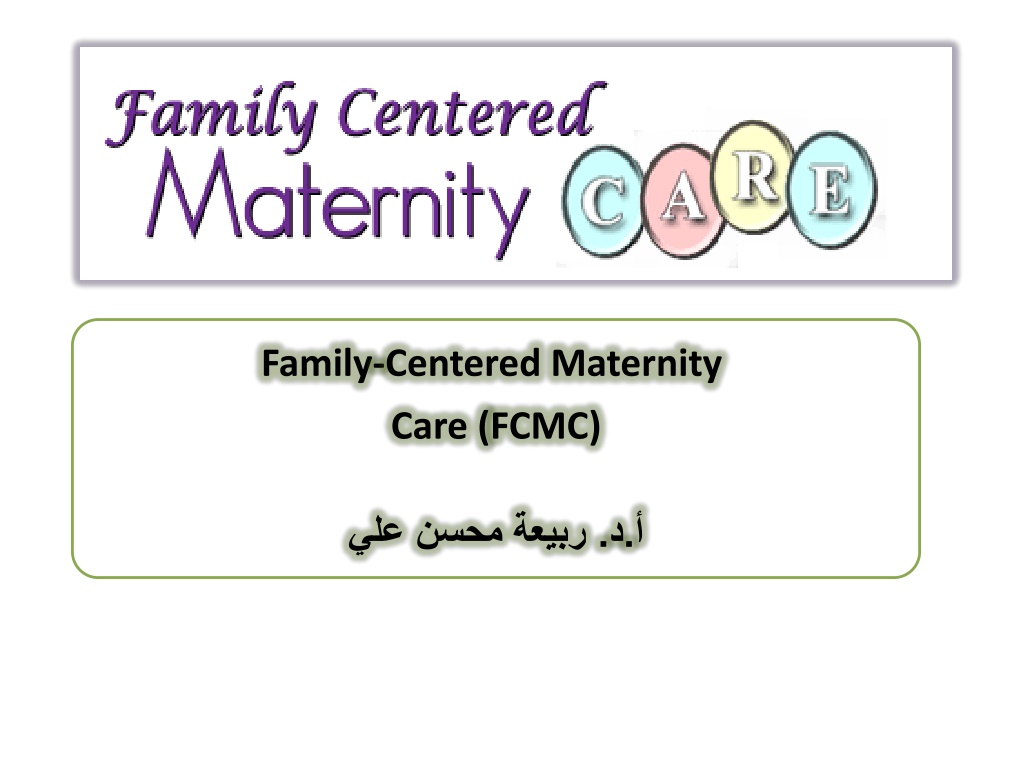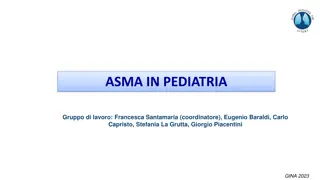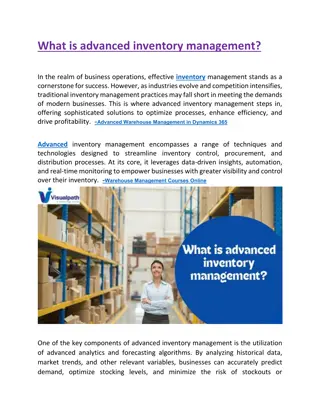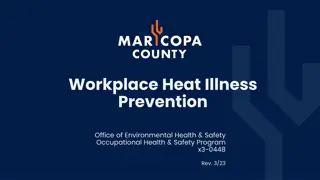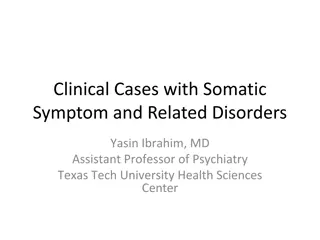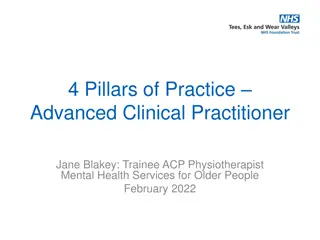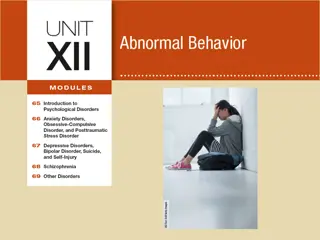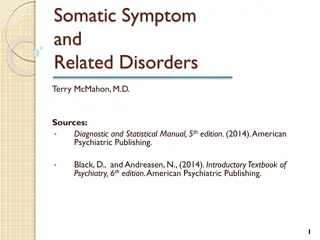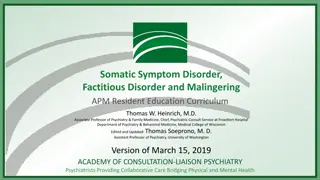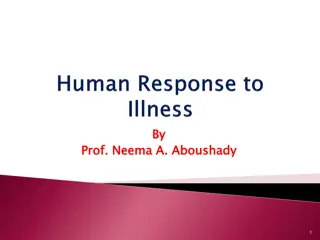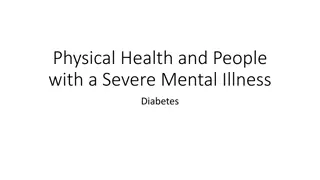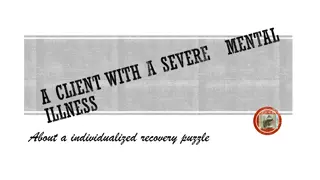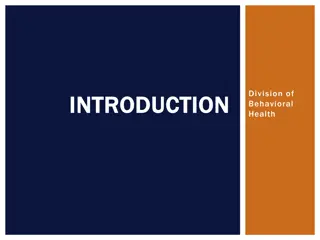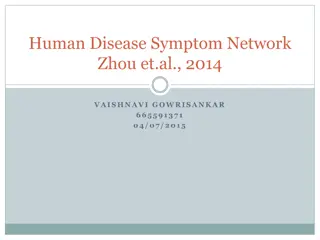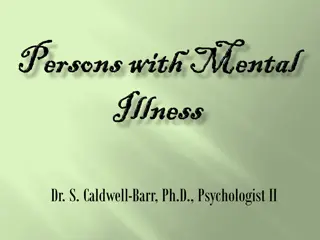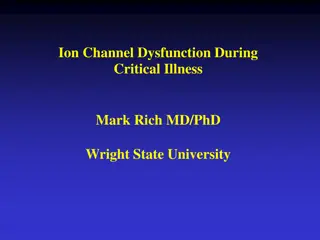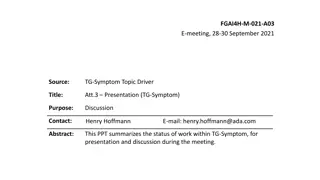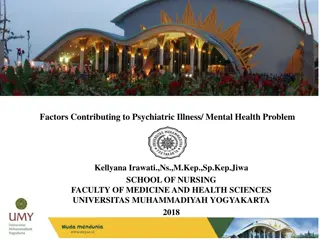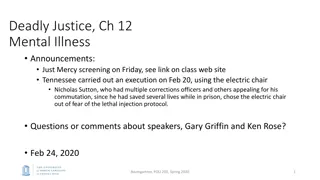Symptom Management in Advanced Illness
Patients with advanced disease often present with multiple symptoms that require proper assessment and management. Understanding the underlying causes and following a systematic approach can help in palliating irreversible symptoms and reversing reversible ones. This includes using appropriate analgesics, such as opioids, for effective pain management. The WHO Analgesic Ladder is a useful guide in selecting the right opioid based on the type and severity of pain. Additionally, being aware of opioid adverse effects and toxicity is crucial in ensuring safe and effective treatment. Addressing specific symptoms, such as neuropathic pain and dyspnoea, may require a tailored approach combining pharmacological and non-pharmacological interventions.
Download Presentation

Please find below an Image/Link to download the presentation.
The content on the website is provided AS IS for your information and personal use only. It may not be sold, licensed, or shared on other websites without obtaining consent from the author.If you encounter any issues during the download, it is possible that the publisher has removed the file from their server.
You are allowed to download the files provided on this website for personal or commercial use, subject to the condition that they are used lawfully. All files are the property of their respective owners.
The content on the website is provided AS IS for your information and personal use only. It may not be sold, licensed, or shared on other websites without obtaining consent from the author.
E N D
Presentation Transcript
Family-Centered Maternity Care (FCMC) . .
Definition of family A family is a group of people who, in most cases, live together. They share their money and food and are supposed to take care of one another. Its members are either genetically related (like brother and sister) or legally bound to each other, for example by marriage. In many cultures, the members of a family have the same or a similar surname.
Type of family nuclear Extended Blended Single parent
Together, our families become the source of our rich cultural heritage and spiritual diversity. Each family has strengths and qualities that flow from individual members and from the family as a unit. Our families create neighborhoods, states, and nations. communities,
Family-centered maternity care is a complex, multidimensional, dynamic process of providing safe, skilled, and individualized care. It responds to the physical, emotional, and psychosocial needs of the woman and her family.
Concepts Birth is a celebration - a normal, healthy process. Pregnancy and birth are unique for each woman. The central objective of care for women, babies, and families is to maximize the probability of a healthy woman giving birth to a healthy baby.
In family-centered maternity care, pregnancy and birth are considered normal, healthy life events. family-centered maternity care may be carried out in any birth setting: home birth, birth center , hospital birth or emergent birth. In short, family-centered maternity care respects the family as a unit, the mind-body-spirit of the family, and provides evidence-based care accordingly.
The Goal The goal of family-centered maternity care is to obtain the best possible healthy outcome for all members of the family. In addition to being the best way to care for mothers and babies.
Benefits of FCMC Increased client satisfaction Increased provider satisfaction Improved medical and developmental outcomes Reduced health care costs
Benefits of Family-Centered Care to Families Decreased anxiety Accelerated recovery time Reduced crying and restlessness Decreased emotional distress with better coping during procedures, hospitalization, post hospital period, and recovery Increased parent confidence and problem-solving capacity Improved mental health status of mothers, of children with chronic illness
There Are Common Themes of FCMC Decision-making should be a collaborative effort between the pregnant woman and her healthcare providers Education should reflect current, evidence- based knowledge Information should be shared freely between the pregnant woman and each of her healthcare providers Mothers and babies should stay together (rooming in).
Principles The presence of supportive people during labor and birth is beneficial to the mother and family Mothers are the preferred care providers for their children Freedom of movement is beneficial for the laboring woman and should be encouraged
Routine interventions that are unsupported by scientific evidence should be avoided All members of the healthcare team should be educated about physiologic birth and non- pharmacologic methods of pain management Skin-to-skin contact immediately after birth and exclusive breastfeeding standards of practice. Pregnancy and childbirth as normal and healthy processes should be
Personalized prenatal care Comprehensive perinatal education, with active input from the family Healthcare professionals assist the family in making decisions important to their care
Outcomes *FCMC results in greater satisfaction for all involved. *They will have participated in the decision- making process which will increase their self- confidence for families that are cared. *They will have validated their learning with real life experience. *Healthcare providers that work within a family- centered model will also experience greater satisfaction
Health is NOT only a physical condition Health also means the parents are imbued with confidence and competence as they transition into their new roles
Thank you for listening Thank you for listening
